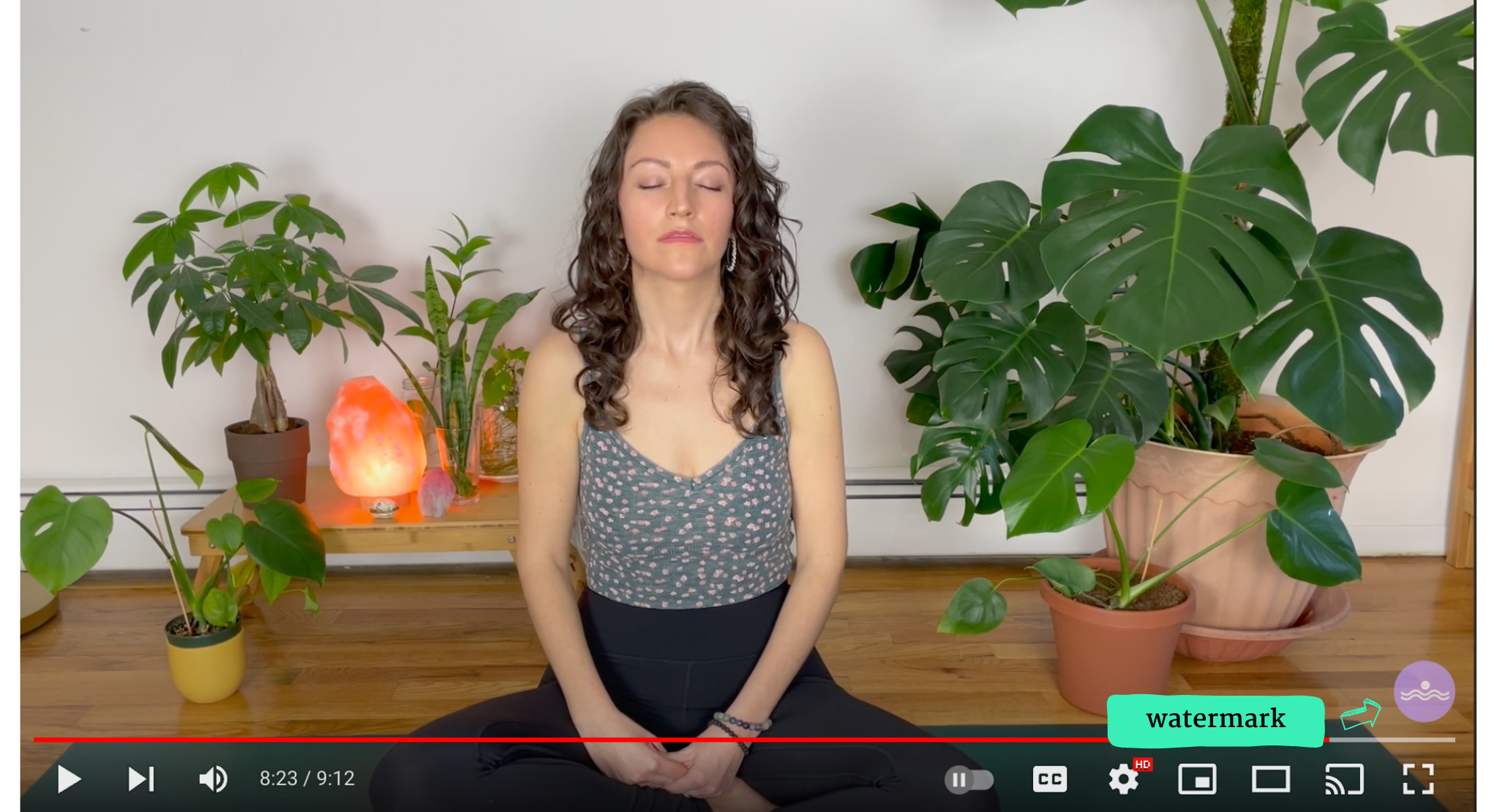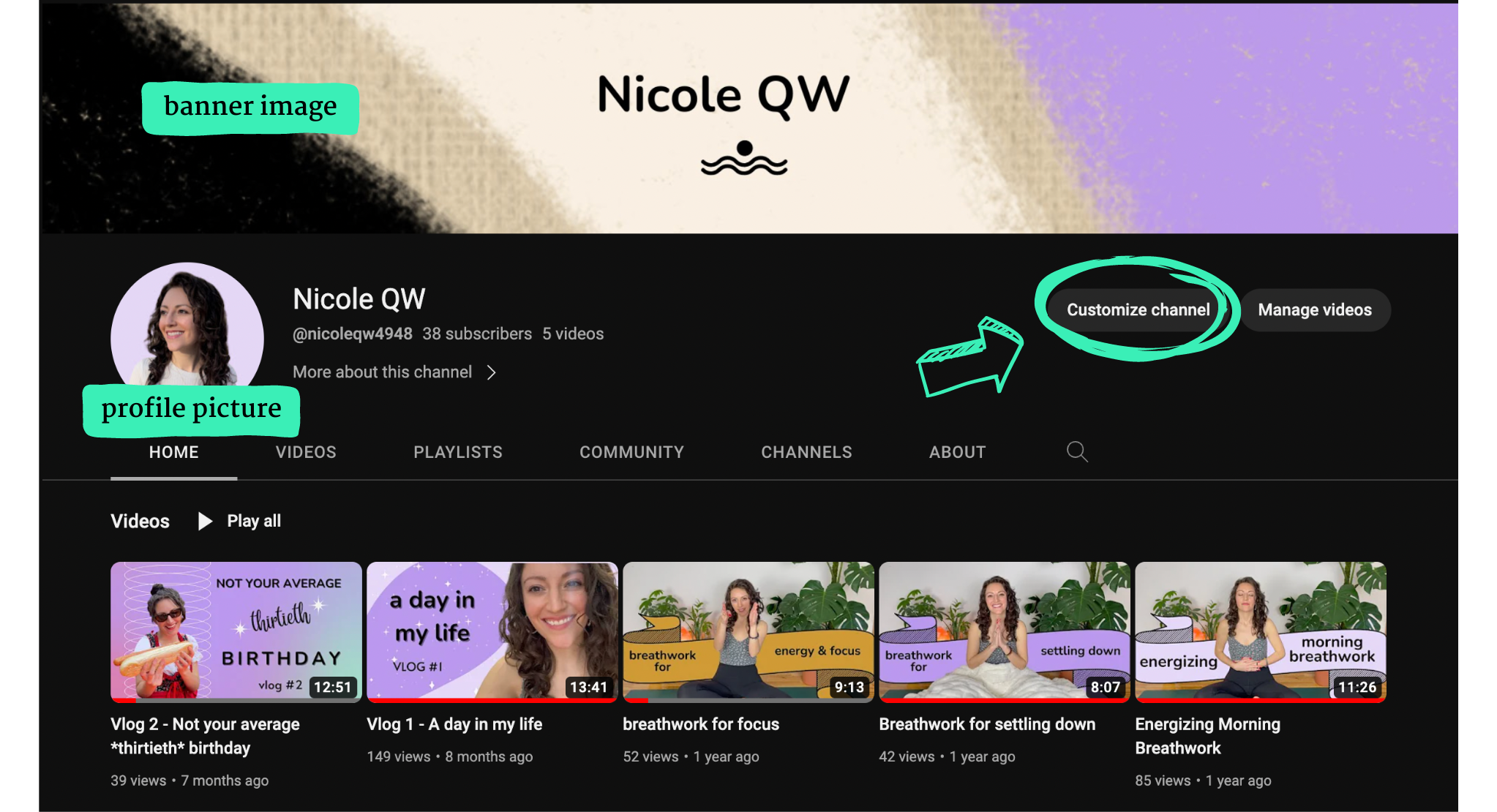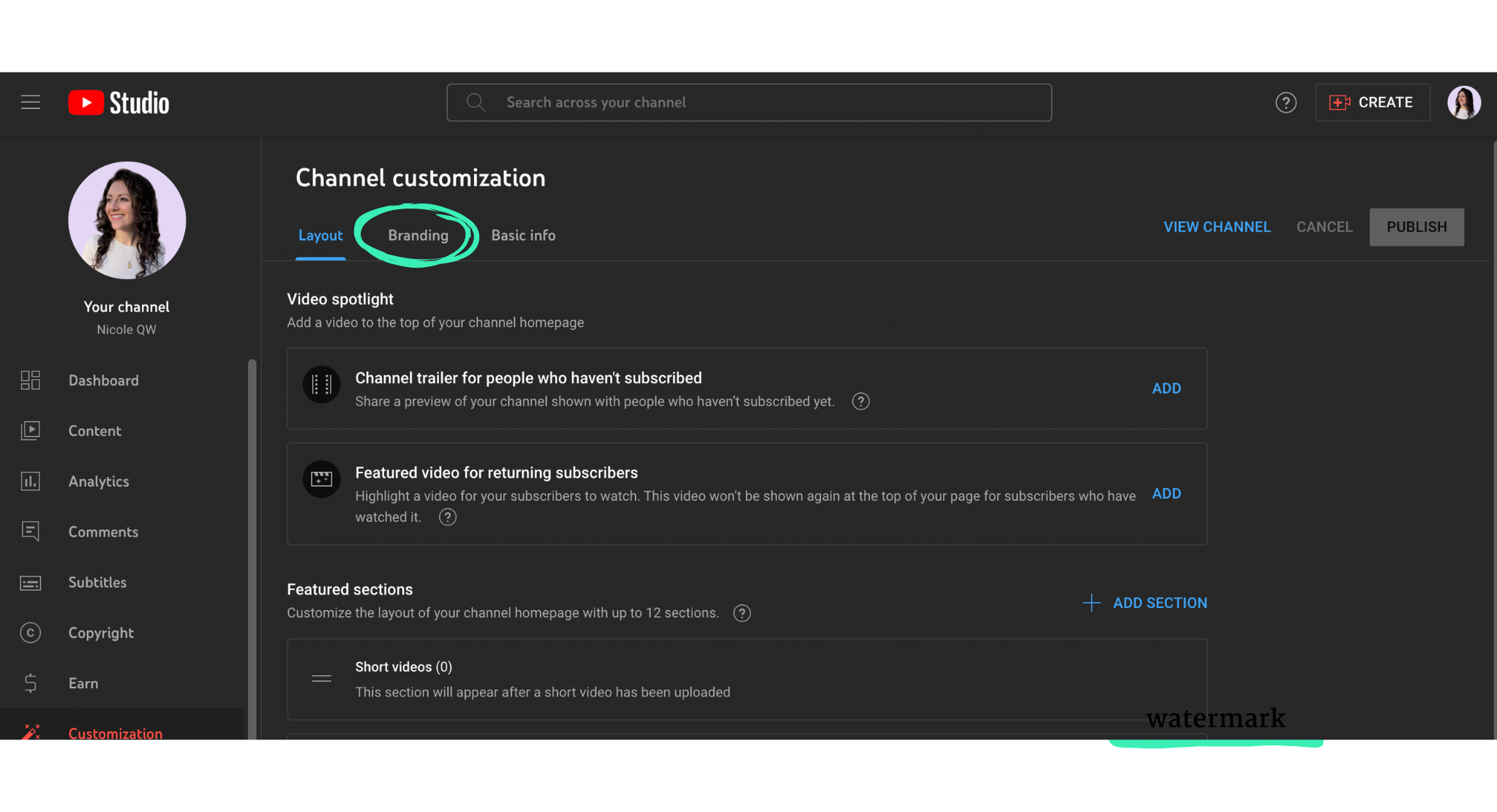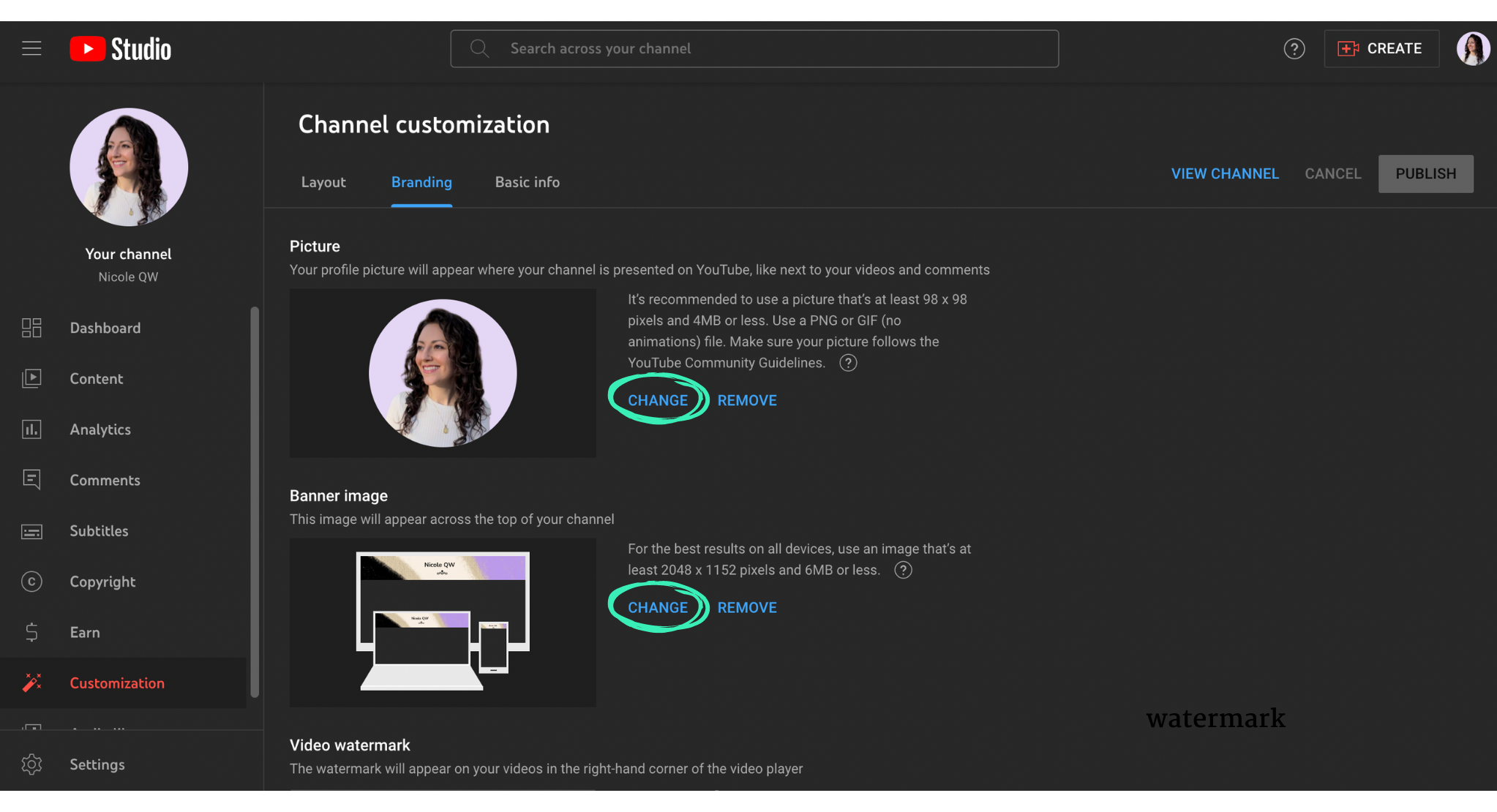If you love creating and sharing content with others, you might be curious about how to start a YouTube channel and make money. There has never been a better time to showcase your knowledge online with engaging video content. Over 80% of all internet traffic comes from video.
YouTube is one of the most popular video-sharing and social media platforms. According to global website rankings, YouTube is the second most visited website after Google Search. The platform also boasts an impressive following. There are currently 2.6 billion monthly active subscribers on YouTube who consume more than one billion hours of video content daily.
In this article, we’ve compiled tips to help you set up your YouTube channel and monetize your knowledge.
How much will it cost to start a YouTube channel?
If you’re interested in creating a YouTube channel, you’re probably wondering how much it costs to get started. Luckily, it’s completely free to start a YouTube channel. However, you may have some upfront costs if you decide to buy any video equipment or video editing software. Similarly, if you choose to film certain videos like “haul” or “review” videos, you may need to pay out of pocket for products if you’re not gifted the products or sponsored by a brand.
For your initial setup, you’ll need a few basics: a computer, a camera, reliable internet access, and a microphone.
How to start a YouTube channel for beginners
Starting a YouTube channel is easier than you might think. The setup process takes less than 60 seconds. But before you dive right in and start sharing, you’ll want to create a plan for how you’ll show up on the platform. Below we’ve put together 14 beginner tips to help you get started.
1. Set up your YouTube account and channel
Before you can start sharing content on YouTube, you need to create an account and channel. If you don’t already have a YouTube account, simply go to YouTube and use your existing Google account to set one up.
Then, once you’ve signed into your account, you can create a YouTube channel:
- Click your user icon in the top right corner
- Select “Create a channel”
- Upload a picture and name for your channel
- Select “Create channel”
After you’ve created your channel, you’ll get redirected to your channel dashboard. The dashboard is your channel’s home base. Here you can customize your channel appearance, upload videos, monitor analytics, reply to view comments, and more.
2. Explore video ideas with keyword research
It’s important to have inspiration and (at least some) clarity about the content you’ll be creating for your channel. This makes the process move a lot smoother. And having a plan helps to quell any overwhelming feelings. One easy and strategic way you can do this is to explore video ideas and gauge what your audience is consuming by doing keyword research.
Keywords on YouTube are words or a phrase that users type into the search bar. The YouTube search engine is powerful and second only to Google (which makes sense, as Google owns YouTube!) Not only can you get an idea of hot topics that other creators in your field are discussing, but you can also boost your own views by keeping these keywords in mind when creating your content. Including these words in your title, video description, and thumbnail can dramatically increase the views of your content. It’s an easy step that can get people to watch your YouTube videos, even if you’re just starting out. There are a few different ways you can do this:
- Analyze the content of other creators in your field—especially the ones you view as successful! Take note of what keywords they are using in titles, descriptions, and thumbnails. Pay attention to different variations of keywords being used as well (For example, some variations of the keyword “wellness” could be “wellbeing” or “balance”)
- Check out the autocomplete function in YouTube’s search bar. When you type in a word, phrase, or topic, a dropdown will appear with suggested searches that are related and popular. This will give you a great idea of what your ideal audience is searching and what’s getting the most hits. Use this information to shape your own titles and descriptions as you create!
Let’s say you were making a video of a guided meditation. Type in the first few words related to your niche/what you’re creating and check out the suggested searches that pop up to see what’s most frequently being searched!

3. Define your niche
Before you start producing YouTube videos, you need to identify what your channel is all about. Your niche is the foundation of your YouTube channel and the focus of your channel’s content. Knowing your channel purpose will also help streamline the content creation process later.
Some of the most successful YouTube channels have a well-defined niche. People like Graham Stephan (4.06M subscribers) educate on how to make money with real estate sales. Peter McKinnon (5.18M subscribers) shares entertaining, beginner-friendly photography tips.
Not exactly sure how to identify your niche? Start by asking yourself a few questions.
- What are you passionate about?
- What knowledge or skills do you have to share?
- Is there a demand for the subject?
- What problems or needs does the audience have?
Once you’ve identified what you want to talk about, do some research. Figure out what your target audience wants to see. Look at what types of content other YouTubers in your niche are producing. Determine how you’ll bring value or a new approach to that audience or market.
4. Plan your content
Now that you know your purpose and target audience, it’s time to create some content. You’ll want to create an organized plan to deliver great content to your audience. Start by selecting the type of content you want to produce. Remember, you can have more than one type of content for your channel.
Popular content types include:
- How to videos
- Vlogs
- Product reviews
- Behind the scenes
- Live streams
Next, schedule how often you plan to create and upload content. Use your niche research to determine the best upload frequency. Consider picking a publishing day (e.g., every Thursday) to promote consistency and get subscribers excited about new content.
Then, sit down and brainstorm content ideas. Jot down 10 – 20 video ideas based on your audience research. If you’ve already built an online course on Teachable, you have a lot of this legwork done. YouTube is a great place to share small parts of teachings from your courses. You can encourage people to learn more at the end of your video by redirecting them to your Teachable course page or website.
5. Add your branding
If you’re serious about starting your channel and making money from your content, you need to put your best foot forward. Like other social media platforms, YouTube is highly visual, and each channel has unique visual elements. To customize the look and feel of your channel’s page, start by adding a few essential brand elements, including:
- Picture: your profile picture (your logo or headshot) will appear next to things like your videos and comments
- Banner image: the image that will appear across the top of your channel page
- Video watermark: a watermark will appear in the right-hand corner of the video player; a watermark can protect your videos against theft but also increase brand recognition

Add these items to your channel with three easy steps:
1. First, click “customize channel”.

2. Navigate to the “Branding” tab.

3. Upload each item under the correct subheading.

In addition to your channel branding, consider adding a channel trailer or featured video to your homepage. A channel trailer is a preview of your channel shown to people who haven’t subscribed yet. Your featured video is a highlight video for your subscribers to watch. Both will give current and potential subscribers a good impression of your channel and brand.
6. Share your story in the about section
Your YouTube channel description is like the “About” page on your website. It tells viewers about you and your channel. Your description is an opportunity to share your story and convince visitors why they should watch your videos and eventually subscribe to your channel. Be specific and include your posting frequency, content style, purpose, etc.
Your channel description will appear in the About section of your channel and search results. The first 100 to 150 characters of your channel description are critical. YouTube only shows this snippet next to your channel in search results. It is the first thing people read when finding your channel, so you want to communicate your value and purpose right away.
Just like other search engines, YouTube also uses keywords to rank channels, so be sure to do your research and include target keywords in your description.
To update your description, click “customize channel” and navigate to the “Basic info” tab to add your channel name and description. On this tab, you can also edit your channel URL and add links to other pages you want to share with viewers (e.g., your website, Teachable homepage, social media pages, etc.)
7. Put together a script
A well-written script is essential to creating quality, watch-worthy YouTube videos. A good script captures the viewer’s attention, keeps them engaged, and leaves them with a key takeaway. A script will also help you stay on track during production and reduce the time you spend making edits afterward.
Start by writing down your video goals and key takeaways. Keep the content short and straightforward. For best performance, keep videos between 7 t 15 minutes. Remember, YouTube ranks videos based on total watch time. Your goal is to get viewers to watch the video from start to finish.
Need help structuring your script? Follow this basic framework:
- Intro: state the promise of the video and explain how you intend to fulfill it
- Title: share the title of your channel, tagline (if applicable), and your name as the host
- Problem: clearly state the problem you’re trying to solve; give examples of how this problem might affect the viewer
- Solution: present your answer or solution to the viewer’s problem; use effects to add visual interest
- Call to action: end each video with a call to action (e.g., “subscribe to my channel” or “start a free trial today”)
8. Start filming
Once you’ve drafted your script, it’s time to start filming.
Here are some easy tips to improve your filming quality:
- Camera: you can use any high-resolution camera (including your smartphone) to film your videos—if you decide to use your phone, invest in a tripod to improve camera stability and make it easier to film yourself
- Lighting: use a combination of natural lighting and lighting equipment to give your videos a professional look and feel
- Audio: opt for a microphone attachment instead of your built-in microphone to improve sound quality and clarity
- Effects: add video effects like text overlay or a Google Slides voice-over recording to create visual interest and variety
- Editing: use video and audio editing software to increase your post-production efficiency and quality
Remember, you don’t need to spend a fortune on cameras and recording equipment. You can inexpensively create a home recording studio setup.
If you want to invest in a few pieces of equipment, it’s also possible to do it without breaking the bank. For example, you can easily learn how to record sound from your phone or computer. However, you can grab one of these best budget microphones for under $35.
To start, use what you already have and focus on getting the content out there rather than making it perfect.
As you practice and produce more content, you’ll learn what filming techniques work best for you and your audience.
9. Upload your video
You’ve worked hard to create, film, and edit your video. Now it’s time to upload your video and share it with the world. Here are eight easy steps to upload your first video:
- Login to your YouTube account
- Click the video icon
- Select “upload video” and find your video file
- Add video details (i.e., title, description, tags)
- Always include target keywords in your video title, description, and tags to improve visibility
- Add visual elements (i.e., subtitles, an end screen, and cards)
- Subtitles, end screens, and cards enhance the viewer experience by making the video more accessible, interactive, and clickable
- Screen your video for copyright issues and ad suitability
- Choose your visibility settings (i.e., private, public, or unlisted)
- Publish your video
10. Create thumbnails for each video
Your video thumbnail is the static image people will view before clicking your video. This small, but important, detail can make or break your channel performance. A good thumbnail gives your video a professional look and entices viewers to watch it.
Although you can select an auto-generated thumbnail for your video, we encourage you to create a custom thumbnail for each video. A good thumbnail can help your videos stand out and increase the click-through rate.
Your custom thumbnail should always include the following:
- The video title
- Your business name or logo
- Brand colors and fonts
- An image relevant to the video content
11. Stay consistent
Consistency is critical to your success on YouTube. When people think of consistency, they often think of how often they post. But, on YouTube, consistency is important with both your schedule and your content.
Not only do viewers expect to see new content on your channel as promised (e.g., “new videos every Monday and Friday”), but they also expect the quality and style of your videos to remain consistent.
Here are a few tips to help you stay consistent:
- Choose content that’s easy to produce regularly
- Set up a video production workflow
- Save a list of target keywords
- Create thumbnail templates
- Align your content with your audience’s interests and needs
- Create a series by splitting longer videos (like your Teachable course videos)
Wondering how often you need to post? Studies show that channels that post more than once a week perform better and receive more recommended views. So if you can, try to post two or three times per week.
12. Post shorts
In 2020, YouTube released a new feature called YouTube Shorts. Like Instagram Reels and TikTok videos, Shorts are vertical, short-form videos (60 seconds or less) created on smartphones. Creators can easily film, edit, and upload Shorts directly on the YouTube mobile app.
YouTube encourages creators to use this new feature to expand their reach, increase engagement, and drive more traffic to their long-form content. Viewers can easily share, comment, like, or subscribe to your channel while viewing your Short.
To create and upload YouTube Shorts, follow these easy steps:
- Download the YouTube mobile app
- Log in to your YouTube account
- Tap the (+) icon on the app homepage and select “Create a Short”
It’s best to keep content for your Shorts specific, catchy, and valuable. You can use Shorts to give an update, share highlights from a recent event or launch, tease a new product, pull clips from long-form videos, and more.
13. Analyze performance
Finally, let’s talk about data. YouTube provides extensive data about your channel performance, content, audience, and more. Measuring your channel performance will help you better understand your audience and promote your YouTube channel. Use the YouTube Analytics feature to review your channel performance and determine what’s resonating with your audience the most.
It’s easy to access your YouTube Analytics:
- Click your user icon in the top right corner
- Select “YouTube Studio”
- Click “Analytics” in the left menu
Inside the Analytics dashboard, you can review data in four different tabs:
- Overview: a summary of how your channel and videos are performing
- Content: a detailed overview of content performance, engagement, and reach
- Audience: a deep dive into who is watching your videos
- Research: insights about what people are searching on YouTube, including your audience
We recommend reviewing your content and engagement metrics at least once a month. That way, you can decide what’s working vs. what’s not. You can also analyze who is coming to your channel and why. Once you’ve done that, you can adjust your content strategy to fit your audience’s interests and needs better. 13.
14. Analyze your competitors’ YouTube channels
While it might seem counterintuitive or like a recipe for comparison to analyze your competitor’s YouTube channel, it’s actually a great way to garner inspiration and insight into what your ideal audience is consuming. If you’re not sure who your competitors are, then start by searching keywords related to your topic or niche. Ask yourself where your ideal audience would hang out, and check out the channels that seem the most popular within this.
Once you identify who your competitors or fellow creators are, do a deep dive into their page. Notice what topics, keywords, and playlists they’ve curated. Check out views and comments on their top videos, and any other details of how their channel is set up. Do they have a welcome video? What do their top videos have in common? What is the common structure/style of their videos?
It’s important to remember that everyone has their own unique way of doing things—the goal here is not to directly copy what your fellow creators are doing, but to get a better idea of what resonates with your ideal audience, and to let that inform your creative process.
How to make money on YouTube
Although you first need to focus on creating high-quality content that people want to watch, you can eventually make money on your YouTube channel.
Two of the most common YouTube partner program features are:
- Advertising: earn money by displaying ads on your videos, end screens, and more
- Channel memberships: enroll subscribers in a recurring membership fee and provide member-only perks
Another way people make money on YouTube is through YouTube sponsorships. Many brands use this powerful influencer marketing strategy to promote their products and services on YouTube. There are three primary types of YouTube sponsorships—product reviews, affiliate marketing, and paid brand sponsorships. Once you’ve grown an engaged audience on YouTube, you can learn how to get sponsored on YouTube and start making money off your video content.
There are other ways to monetize your knowledge, not just on YouTube. Many YouTubers use their video content to create paid courses on Teachable. As you grow your following on YouTube, consider taking your creative skills to the next level. With Teachable, you can continue to teach people what you know and easily get paid for creating content that people love.
Must-have tools to start a YouTube channel
Some of the most important factors when creating quality content are lighting, clear video, and easy-to-hear sound. Luckily, it’s pretty easy to hit all these marks with just your good old smartphone.
Invest in a tripod, you can get a decent one for under $30 on Amazon. And find a well-lit (natural, indirect sunlight is usually the best option) and quiet spot in your home to film is plenty if you’re just starting out. You’ll also need access to video editing software, such as iMovie or Premiere Pro. If learning how to use these tools feels overwhelming, don’t worry! YouTube Studio has basic editing tools available that you can use before publishing a video, and there are plenty of free resources you can access to learn more about how to edit YouTube videos.
If you’re in a space to do so, getting a ring light and wireless microphone can improve the quality of your videos, and having a membership to a site like Epidemicsound (or another royalty-free music site) can provide you with opportunities to make your videos more engaging.
Don’t get too caught up in needing to get all the latest gear or feeling like you need to have all these things in order to get started. Your smartphone is more than enough—the most important part is showing up authentically in the video!
FAQs
What is a brand account on YouTube?
A brand account allows you to have an account that is associated only with your brand instead of being linked to your personal Gmail account, as would usually be the case. It also means you can allow multiple people to access the account as you grow your team, while protecting the privacy of your personal account/email.
What type of content is popular on YouTube?
The majority of content falls into one of the following categories: comedy, music, entertainment/pop culture, and “how to”. Overall, you can think about the purpose of the content is to entertain, to inform, and/or to inspire. The best YouTube channels will have a variety of content that serves a mixture of purposes. Do keyword research and analyze your fellow creator’s content to get more specific ideas on videos that fit in your niche!
How can I change my YouTube channel name?
- Sign in to YouTube Studio.
- From the left menu, select Customization Basic info.
- Enter your new channel name.
- Enter your new channel description.
- Click PUBLISH.
Join more than 150,000 creators who use Teachable to make a real impact and earn a real income.


